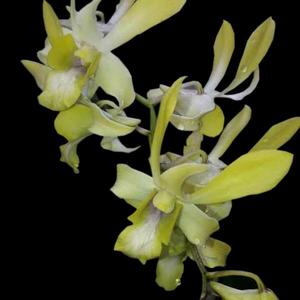If this is your first experience growing an orchid, don’t be afraid of them, most are no more difficult to grow than ordinary houseplants. Orchids are unique, unusual, gorgeous, and very special and once you get used to what they need we expect you will be delighted growing them.
- Learn what kind of orchid you have so you can understand its needs. With over 800 genera, more than 25,000 species, and hundreds of thousands of registered hybrids, the orchid family is among the most diverse of the plant families. Don’t let that be intimidating, there are only a dozen or so types of orchids that are generally seen for sale, a few more types if you go to an orchid show or nursery. Over half of the orchid plants that are produced are Phalaenopsis. Other genera such as Cattleya, Dendrobium, Cymbidium, Oncidium and Paphiopedilum are showing up in many places, including groceries and hardware stores. If your orchid doesn’t have a label, try to identify it from pictures on the internet and from there learn its culture and repotting needs. You can send us a picture at Orchid Den for help with identifying your orchid.
- Fertilize “weakly, weekly”. In nature most orchids cling to trees and get very little in the way of food. They are happiest with a consistent supply of weak fertilizer. In general orchids prefer a balanced complete fertilizer.
- Watering an orchid is different than it is for other plants. The easiest way to water an orchid is to take it to the kitchen sink once per week and flood it with water. The water will run right through the pot as orchids are potted in free-draining mixes. A few minutes later put it back. Resist the temptation to water it too frequently, orchids hate that. Generally speaking, once every 7 days should be fine in winter and once every 2-3 days in summer. If an orchid is in a planter with no drainage hole it will need to be moved to one as soon as possible, they don’t like to sit in water.
- Repot orchids when they go out of bloom into fresh orchid mix. This gives them the best chance at a successful growth phase and the flowering phase that follows. Orchids will suffer if they remain in the same media too long, they need oxygen at their roots. The freshness and quality of the orchid mix is an essential component to successful growth and flowering. Usually repotting every 2 years is adequate though many will benefit from annual repotting.
Good roots bring good blooms. An orchid may have deceptively beautiful leaves with a root system that is in dire trouble. Often root trouble is the result of over watering, under watering or lack of repotting. The media that orchids are potted in is not like the “dirt” that traditional houseplants are potted in. Even the best orchid mix breaks down over time and requires replacement. Often fear of the repotting process will cause people to leave an orchid in the mix for far too long. This may be preventing the orchid from having enough stored strength to bloom.
The selection of a top quality orchid mix is of the utmost importance. Don’t be fooled by generic orchid mixes sold at hardware stores. When it comes to orchid mixes, quality and freshness really matter. Once you see for yourself the difference a fresh mix from the highest quality ingredients makes compared to store brands you won’t ever want to go back to those inferior mixes again.

